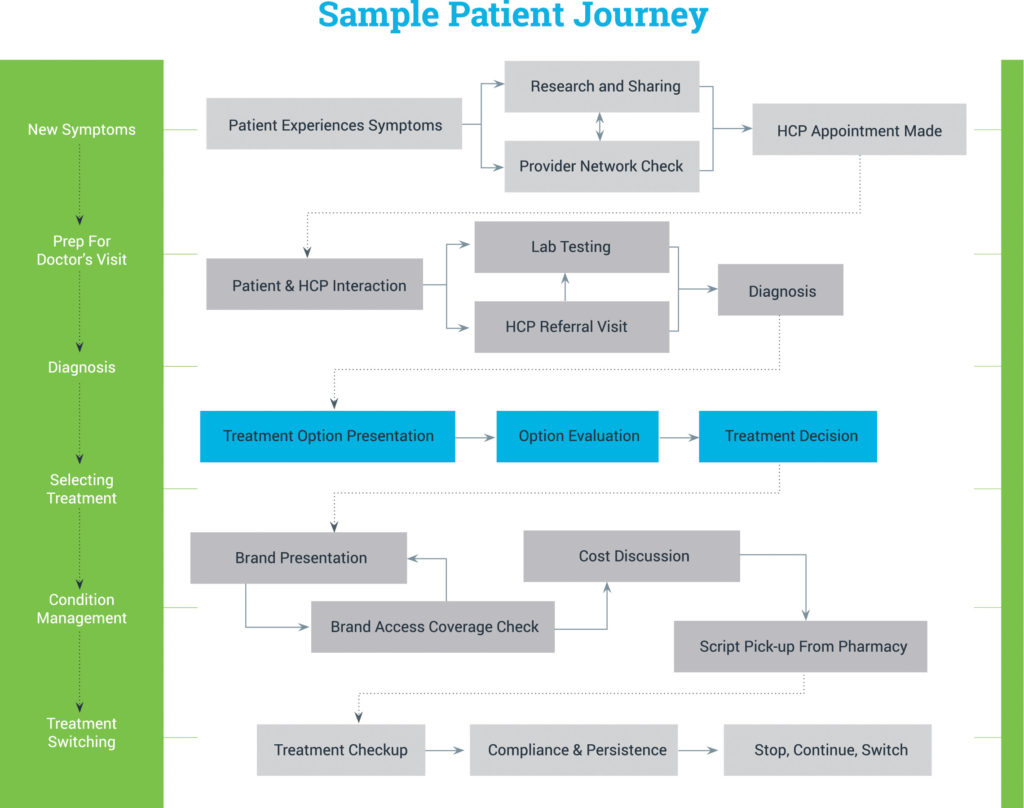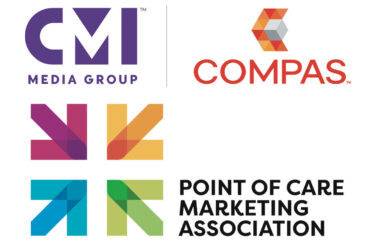The term customer experience (CX) may seem like the latest buzzword infiltrating corporate lexicon, but the concept has been around since the beginning of commerce. It’s only recently that we’ve started to think about the customer experience before a purchase or transaction occurs—it encompasses the entire customer journey. CX is no longer solely a function of customer service; it’s now an important function for nearly every department.
This has put new responsibilities on marketers to create a seamless and personalized omnichannel customer experience. And because improving CX involves multiple functions across the organization, and requires new tools and success metrics, it has proven a challenge for those of us operating in the high-regulatory pharma environment.
Still, marketers in the pharmaceutical industry see the value in better engaging patients, caregivers, and healthcare providers through personalization. It can be done while playing within the compliance sandbox and meeting the expectations of stakeholders.
This is where journey orchestration comes into the picture. This article will provide concrete steps you can take to deliver on the promise of customer journey orchestration.
What is Journey Orchestration?
Simply put, journey orchestration is the seamless delivery of an individualized end-to-end user experience across every channel. Journey strategies share many goals with multichannel marketing campaigns, but they’re best managed, measured, and tied together through a journey orchestration platform.
Why is this important? It’s no secret: Digital marketing used to be a bit of a Wild West, but now more regulations are being put in place to corral what we can and can’t do. Regulations like GDPR that protect user data and help guard against spam tactics are good, and there’s no denying that marketers need to evolve as looming regulations and policies promise to restrict interactions even further.
What’s more, consumers across the board expect a better and more seamless experience, online and off. From their first impression of you to their first interaction with your brand, and even after they are customers, their experience should be frictionless and personalized. As an industry, we’ve failed to deliver; according to the healthcare industry development lead at Google, Cozi Namer, the average bounce rate for healthcare websites is 58%.
There’s an undeniable need for marketers to align more closely to what users want and expect—to engage them in more meaningful and impactful ways. And journey orchestration is one way to achieve that.
Now keep in mind, journey orchestration is just one arrow in your organization’s quiver. It won’t fix everything and shouldn’t be oversold. It can’t make up for other operational shortfalls. But when realistic expectations are set and a solid strategy is in place, it can give you the unfair advantage that every pharma marketer seeks.
Getting Started with Journey Orchestration
Traditionally, pharma marketers have used audience-level segmentation to customize messaging and outreach. This has played out in the form of sales reps sending pre-approved email messages to physicians in a specific geographic region who specialize in a key indication, or marketing serving display ads based on search queries.
These tactics may be effective, but the problem is they represent a siloed approach where each activity takes place within its own channel and data resides across disparate systems rather than one centralized location. This limits the degree to which you can truly leverage personalization.
Journey orchestration can help you uncover those limitations and gaps if you start small and phase in various components as you learn. Strategies will evolve as you pilot journey orchestration, so it’s better to remain lean and agile in the beginning.
In developing a journey orchestration strategy, you have to understand where you are before you can chart where you’re going. A good journey orchestration strategy will begin with a journey map. This is a visual representation of every interaction between your customer and your brand across online and offline channels, and it culminates with a desired end state (e.g., prescribing rates, drug sales, or adherence).
Start by mapping the existing user journey. Identify every touchpoint or interaction between your customer and your brand over the entire duration of the journey. Then zero in on the portion of the journey you want to optimize. Touchpoints could include:
- Unbranded landing page visits
- Disease awareness event registrations
- Report downloads
- Point-of-care conversations
- Prescription refills
Your goal is to document how your customers are engaging at each point and measure that engagement against key performance indicators (KPIs). This will help you identify gaps in your data collection and opportunities to improve CX. For instance, you may discover prescriber open rates for your rep email campaigns are lower than goal. As you work through the journey map, you might decide to test different messaging or a different channel altogether.
The goal here is not uncover every gap—that job is never done—but to gain a sense of where you have the greatest opportunity to better align the user experience.
 Building the Blueprint for an Omnichannel Experience
Building the Blueprint for an Omnichannel Experience
From here, you can build your ideal journey map. This new user experience will utilize higher-level marketing objectives to improve touchpoints, messages, or channels based on where you believe there to be breakdowns in the experience.
The following questions can help inform your ideal user journey map:
- How do users prefer to interact with your brand or product at each point in their journey?
- What are users’ pain points and how can you improve messaging to address them?
- What events or interactions are required in which channels to deliver on user expectation?
- What content and technology are required to support the ideal journey?
Once you’ve identified who your initial audience is (focus on one segment to start), how they want to interact with your brand, their pain points, how well you’re currently meeting their objectives, potential roadblocks, and any technologies required, you can begin to build a blueprint for your ideal user journey map.
This map will serve as a visual representation of the “actions, events, or plays” that are most impactful to your organization and detail how to make sure everything that flows to them, from the right customers, to the right content to the right conversions, are all connected. Let’s take a look at what this looks like in action.
One example: Suppose that you are currently driving a lot of traffic to one of your patient websites through display ads. You may be satisfied with the results, but after examining the analytics more closely, your team discovers the patients who clicked through the ads have the highest bounce rate of every campaign you have driving to the website. They also represent the lowest overall conversion. What could be contributing to this?
Is it a misfire on the messaging, the channel, or the timing? Through journey orchestration, and the 360° view of your customers that you gain, you’ll be able to pinpoint where the breakdown occurred. Using the insights from your ideal user journey map, you can determine the best content to deliver to each user based on their behavior and engagement level—and you can do this in near real time.
Let’s look at another example. Say you are deploying an email campaign consisting of three emails to educate prescribers on a new drug. While this campaign is firing, the sales team is sending a series of two moderately personalized, pre-approved emails to every prescriber in their territory who specializes in that particular indication. You’re tracking open rates and click-through rates, but that’s all. You don’t have visibility into how many of these click-throughs are translating to sales appointments made. Similarly, your sales team doesn’t know when a physician engages with the email campaign, and therefore cannot take meaningful action based on their behavior.
By adding journey automation and personalization, you can refine prescriber segments and send more relevant messaging, at the right time and through the right channel. For instance, after the first email goes out, you can alert sales reps of the most engaged users and which content they interacted with. With this information, sales can follow up with only the most engaged users with personalized messaging based on the content they were interested in. This might be in the form of an email or a one-to-one ad in which they deliver an optimized version of the drug website to the users who have shown further interest in a sales appointment.
This is a very deliberate way of orchestrating the experience. It requires understanding the audience segment (their objectives and key behaviors), mapping out the ideal journey map to meeting those objectives, and identifying the pre-approved assets (marketing emails, personalized sales emails, dedicated landing pages, one-to-one ads, etc.) that will help move users through that journey. And in doing so, you meet multiple stakeholder objectives and gain a compliance competitive advantage by delivering highly relevant marketing messages to those who are most interested.
Yes, this approach requires more due diligence and detail than the old process of casting a wide net across a large market segment. But when executed properly, journey orchestration can increase conversions, expand the total lifetime value of customers, and even create more advocates.







